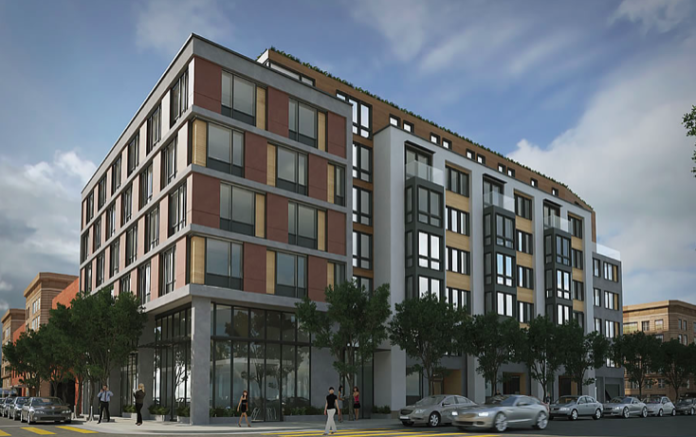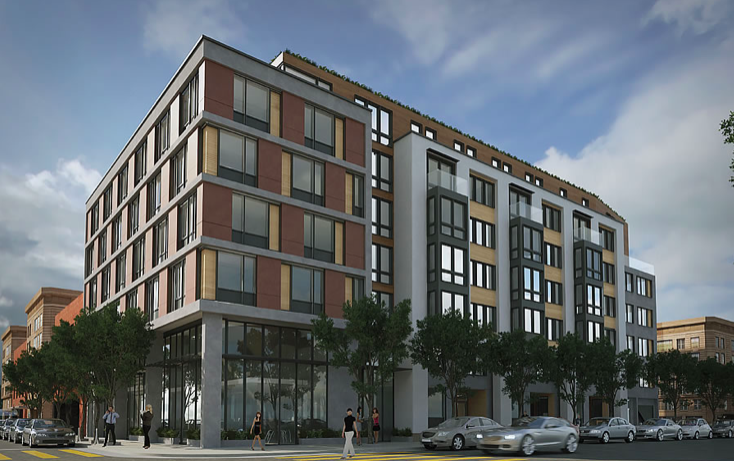
The Board of Supes unanimously rejected today a proposal that would have allowed a market-rate housing development to cast a shadow on a South of Market park.
The vote was a direct rebuke the Mayor London Breed, who supported the project, and made a clear statement that this board is not going to rubber-stamp development in an increasingly crowded city that violates a 1984 law protecting sunshine in the parks.

At issue was a project at 1052 Folsom and 190 Russ Street, a site owned by one of the most notorious Ellis Act evictors in the city.
The building would cast a shadow on Victoria Manalo Draves Park, the only full-service park in the neighborhood.
Anjelica Cabande, organizational director for Somcan, noted that the neighborhood has 35,000 residents and two parks. The area that would be in shadow is the place people enter the park, and is heavily used.
Steve Williams, a land-use lawyer working with SOMCAN, noted that three years ago, a smaller version of this project was rejected because of its shadow impact. The developer was told early on that the project would involve shadows on the park. That, he said, created a problem with the California Environmental Quality Act.
Sue Hestor, lawyer for SOMCAN, said that the Planning Commission had no shadow studies, “yet they adopted the shadow findings without evidence. They cannot do this.”
Here’s what really went on: The Recreation and Parks Commission wouldn’t accept the project — then its membership changed. Under Mayor Breed, new commissioners replaced some of those who had opposed the project.
“There are political powers,” Sup Aaron Peskin said. “Commissioner Megan Levitan was not reappointed arguably because of her courageous vote against this project.”
So all of a sudden, a project that was unacceptable in 2015 was just fine three — in a larger version — three years later.
For more than an hour, Soma residents and activists – many of them members of the Filipino-American community — spoke against the project. Many said this park was their back yard; there are not a lot of single-family houses in the area, and most people live in small apartments.
The biggest shadow impacts would be in the later afternoon and evening, during the spring, summer, and fall months, which is when the park has its most use.
This, several speakers noted, will set a precedent: Developers have an eye on Central Soma, especially after the Central Soma Plan was approved, and if those tall buildings can block sunlight in the parks, it’s going to be a dark canyon in the remaining open space.
The Planning Department brought out a response that shows the long-term problems with regional plans like the Soma Plan and the Eastern Neighborhoods Plan. The department argued that the Environmental Impact Report on the Central Soma Plan acknowledged that at full build-out, shadow impacts on this and other parks would be “significant and unavoidable” – but the Planning Commission and the approved that EIR and passed that plan anyway.
Sup Rafael Mandelman raised the question of whether the program EIR made it impossible for the city to evaluate these shadows from individual projects.
In the program EIR, he asked Planning staffer Michael Li, “You simply argued that the impacts were significant but couldn’t be mitigated.”
Li: “Correct.”
Mandelman: “You said there were impacts that can’t be mitigated, but now you say there are no impacts?”
Li: “Correct.”
In fact, Li argued, the commission decided to balance the impacts of the shadows and the value of the project, and decided to approve it.
Peskin: “Where in Prop. K [the law protecting sunshine in the parks] does say that you can balance the impacts of shadow?”
Li: “It’s not in the text.”
No, it’s not. In fact, Peskin noted, the City Attorney’s Office in 1986 – when the pro-developer, conservative George Agnost was city attorney – put out a memorandum saying that under Prop. K, “you can’t trade shadows for cash.” No matter how nice a project it is, and no matter how much the developer offers to pay the city, a shadow is a shadow.
Alice Barkley, representing the developers, tried to minimize the shadow impacts by saying that the trees in the park also increase shadows. A handful of speakers supported the project, including Steven Booth, a lawyer with the Tenderloin Housing Clinic, who represents some of the existing tenants. He said that the developer offered to relocate the existing tenants and allow them to come back at rent-controlled levels. (That’s the law anyway.)
The property owner is one of the worst Ellis-Act evictors in the city.
The pro-developer speakers argued, among other things, that the new wealthier residents of the project might help populate the park and drive out the homeless people and drug users who they said hang out there now.
It was a remarkable demonstration of the sharp divides in the housing crisis: Almost everyone who supported the project said that the solution to the housing crisis is to build more market-rate housing. Almost everyone opposed argued that more luxury housing in Soma will only lead to more displacement.
And in the end, the supes sided with the community. It’s very rare for the board to overturn a Planning Commission ruling on appeal. But this is a signal to the developers who want to maximize size and profit: You can’t block the sun.


